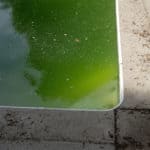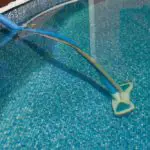If you are thinking about getting a rabbit to keep as a pet, or you have recently brought one home with you, then you might be wondering more about the correct way to keep and house one.
There are lots of things to consider when you get any new animal, and rabbits are no exception to this rule. There are certain things that you will need to do in order to take care of and provide for them sufficiently.

In this article, we are going to tell you everything that you need to know about the placement of a rabbit hutch. This will help you to understand what you need to do to help keep your rabbit both safe and protected.
Should a Rabbit Hutch Be Off the Ground?
Yes, a rabbit hutch will need to be raised off the ground in order to protect it from rising damp. If your rabbit hutch does not already have legs attached to it, you will need to either make your own, or purchase some directly from the manufacturer.
Something else that you can do is to add castors, which are wheels that are designed for things like cabinets to make them easier to move. You can get these from your local DIY store. If you are looking for a less costly alternative, you could also place a brick under each corner.
How High Should a Rabbit Hutch Be Off the Ground?
If you are going for a traditional hutch, you will need to ensure that it is big enough for a rabbit to take 3 hops and for them to be able to stretch fully upright.
For the majority of breeds, you will need to get a hutch that is 6ft long and 2ft tall. You should never get a rabbit hutch that is less than 6ft x 2ft x 2ft. Anything smaller than this may not be big enough.
How to Make Your Rabbit Hutch Secure?
Something else that you will need to consider is the security of your hutch. Many rabbit hutches will have doors that are secured with a twisting section of wood, but this can become loose if a predator is scratching at it. This type of door will need to be properly secured with slide bolts.
If you want to take this security one step further, you could also get a padlock for the door of the hutch. This can also be helpful for preventing children from opening the hutch.
Another issue that you may encounter is with the mesh parts of the hutch, and you will need to make sure that they have been securely fastened. Weld mesh is a better option over chicken wire, and you can attach this mesh with nails from a DIY store. Mesh that has holes that are under half an inch are usually the best. Otherwise, cats and other animals might be able to get their paws through the mesh.
Where Should I Place My Rabbit Hutch?
You should try and place your rabbit hutch in an area of your garden that is protected from the wind and out of direct sunlight. When winter comes along, you can choose to move the hutch into a shed or garage to provide them with extra protection, or you can cover it with a blanket or hutch snuggle.
Will My Rabbit Need More Than Just a Hutch?
Yes, rabbits are super active animals, and they can develop painful skeletal issues if they are stuck in a hutch all day every day. Daily exercise is essential for rabbits, which is why their hutch should only ever be their shelter.
You should also attach an exercise run to their hutch so they have room to keep active when they need to. You can keep the exercise run separate to the hutch, but this may become an inconvenience as you will need to move them to and from the run every day.
Chewing Habits and Hutches
The majority of rabbits will chew on their hutches and runs, which is why you should always make sure that the wood has not been treated with anything toxic. The majority of modern paints are safer than older types, but they are not designed to be chomped on.
Any wood that is being treated with a timber preservative will need to be done with a preservative that is safe for pets. If they do manage to chew through their hutch, they can escape, which is why you should always check that everything is as it should be.
The best material for a hutch is typically solid wood, and this is a warmer material that will provide the best protection against predators. As well as this, it is also known to last longer. The hutch itself will need to be raised off the ground to protect the rabbits from predators and prevent the base becoming wet and damp. The roof should also be slanted to allow rain to run off of it.
Cleaning and Maintaining Your Rabbit Hutch
You should always clean out the entirety of the hutch at least once a week, but you will need to clean the rabbit’s toilet area around 2 or 3 times a week. Every few months or so, you can give the hutch a good scrub with hot water and disinfectant spray.
When it comes to maintenance, you might find that you need to replace the felt roofing of the hutch when it becomes worn or if it tears, as otherwise, water may be able to get in. You can also paint the hutch with a waterproofing agent, like creosote replacement, once a year before the winter comes around.
Essential Areas of a Rabbit Hutch
It can be helpful to provide your rabbit with a litter tray in the corner of their hutch. Your rabbit will use this as a toilet, which can minimize the amount of cleaning you have to do. A sleeping area is also useful, but some hutches will already include this.







